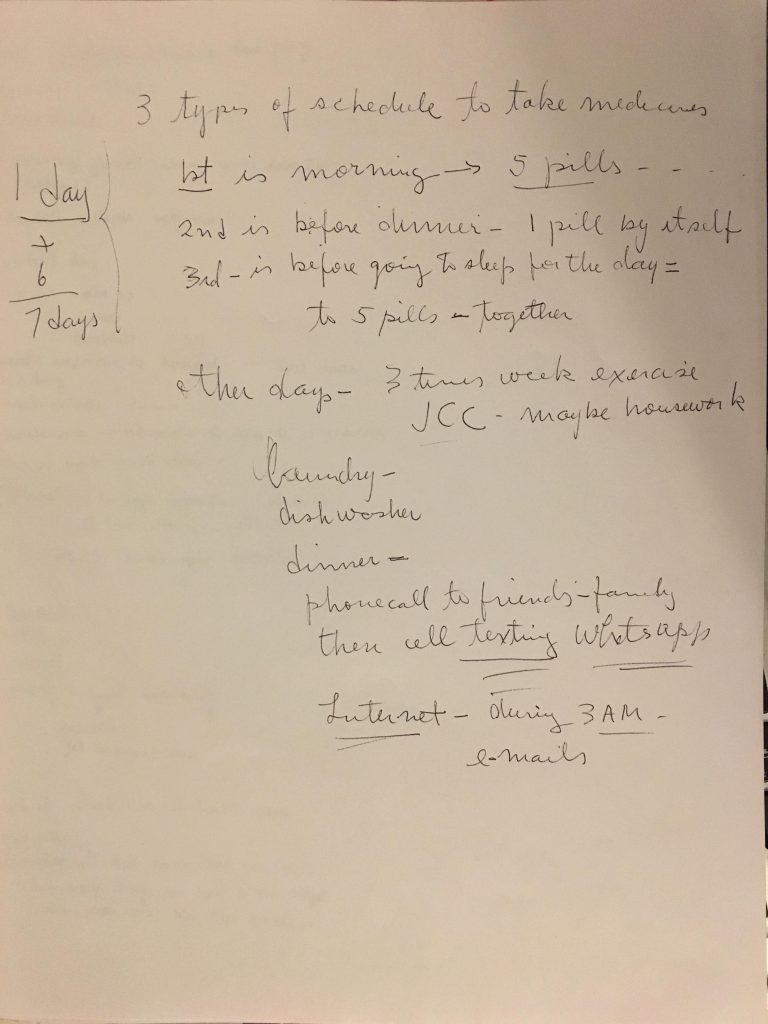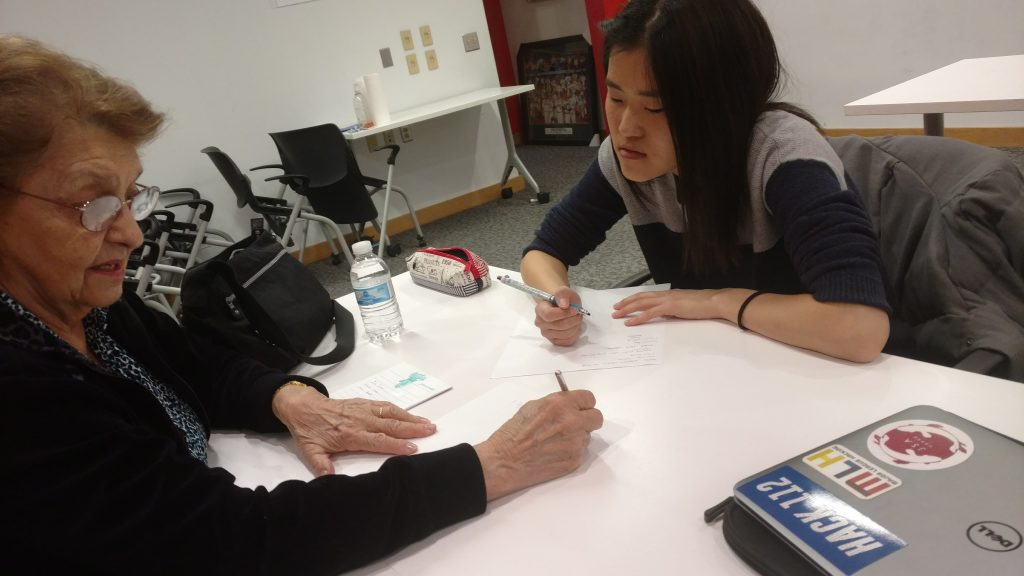Initial Meeting
Introduction:
We aim to create an assistive device for an older person. This can be in the form of any type of device that helps them in their day to day life. In order to better understand our intended user we set up a meeting with Wilma, an older lady in the area who volunteered to help us, in order to get a better idea of different problems in her life that we can aim to solve. We set up the meeting for Monday, March 26th at the JCC. Our main goals for the meeting were to introduce ourselves to Wilma, explain the goal of the project, explain the meaning behind an assistive device, explore Wilma’s living situation and finally hear about different problems she has in her day to day life. From here we were able to construct an agenda for the meeting.
Agenda:
1.) Introductions: We first want to introduce ourselves to Wilma. Sharing facts about us such as year in school, major, and where we are from as well as learning about Wilma and her past will make it easier to interact for the rest of the meeting as well as in the future. Establishing a connection of trust is critical since we are creating the product for her in particular.
2.) Project Goals:
- Creating an electro-mechanical device, explain what this means and types of components it can entail
- Create an assistive device, explain meaning of assistive device and how it can incorporate any aspect of one’s life
- Explain our technical background, this will give more information into the type of projects that we can complete
- Explain timeline of project, only have 6 weeks to build final device so it needs to be scalable
- Show examples from project 2, bring laptop to show pictures and documentation of past projects to show types of devices that we can create
3.) Ideation/Problem Identification
- Have Wilma explain her daily routine, asking about any problems she undergoes through the steps. Sample Questions: “How could this experience be improved?”, “What is the most difficult part of completing this task?”
- Have Wilma talk about different areas of her home in order to get a better idea of some of the situations she finds herself in, have her sketch certain areas/tasks if necessary. “What do you wish was different about this area”
- Supplementary Questions:
- Is there something that you used to enjoy doing/used to do that you can no longer do?
- What task causes the most physical strain day to day?
- What task causes the most mental strain day to day?
- What do you wish could be automatically done for you?
- What technology do you use? What do you like/dislike about it?
- Ideation process: Based upon the different problems identified we want to sit down and discuss possibilities of ideas that we can move forward with. Bring a notebook in order to sketch different possibilities with Wilma giving input on different ideas with our guidance. Goal is to have three good ideas that we can explore further
4) Conclusion
- Based upon ideation we want to take any notes/pictures of what the final assistive device would help with
- Thank Wilma for her help and set up future meeting. Can also ask if we can contact her with small questions based upon further exploration of different ideas
Meeting Summary/Takeaways:

Notes Wilma took to describe her daily routine to us

Together we tried to identify issues in Wilma’s daily life and possible solutions using technology
During the meeting, we tried to derive specific problems or issues that Wilma had in her daily life, and one of the problems she raised was an issue with her doorbell. The doorbell at her apartment is identical for all doors, so the she has no method to differentiate which door to go to. However, we came to an agreement that there is no clear technological solution for this problem, because anything sound based may go unheard and anything visual defeats the purpose, because then she might as well just check the door.
Through further brainstorming, Wilma mentioned that she often had trouble tracking what she had in her freezer, and would realize that she had forgotten to buy more of what she needs when she needs them. We decided that this would be a more suitable goal to pursue, since the scale is much smaller, and we can focus on certain aspects of it step by step.
In our initial research, there seems to be several API’s that can access barcode databases. If we decide to pursue this project, we would use a scanner input to keep a simple inventory for her freezer, with options to increment and decrement counts with buttons. Because this project will have to connect to an online database, we would most likely use a Raspberry Pi.
Other issues we discussed with Wilma included the difficulties of keeping track of the pills her husband needs to take, walking down stairs with bifocal lenses, and more generally, how it is difficult to engage in her social life because she needs to take care of her husband and how taxing common chores can be due to her arthritis.

Notes we took during the meeting – describes some of our brainstorming and thought processes
Thoughts:
While we tried to identify everyday issues that technology may be able to solve, it was interesting to notice that Wilma had already adapted her lifestyle to accommodate these difficulties, and it actually would have been more difficult for her to accustom to a new lifestyle with the new technology. We hope that the device we create will not be intrusive, but instead assist her to make her life easier.
Leave a Reply
You must be logged in to post a comment.